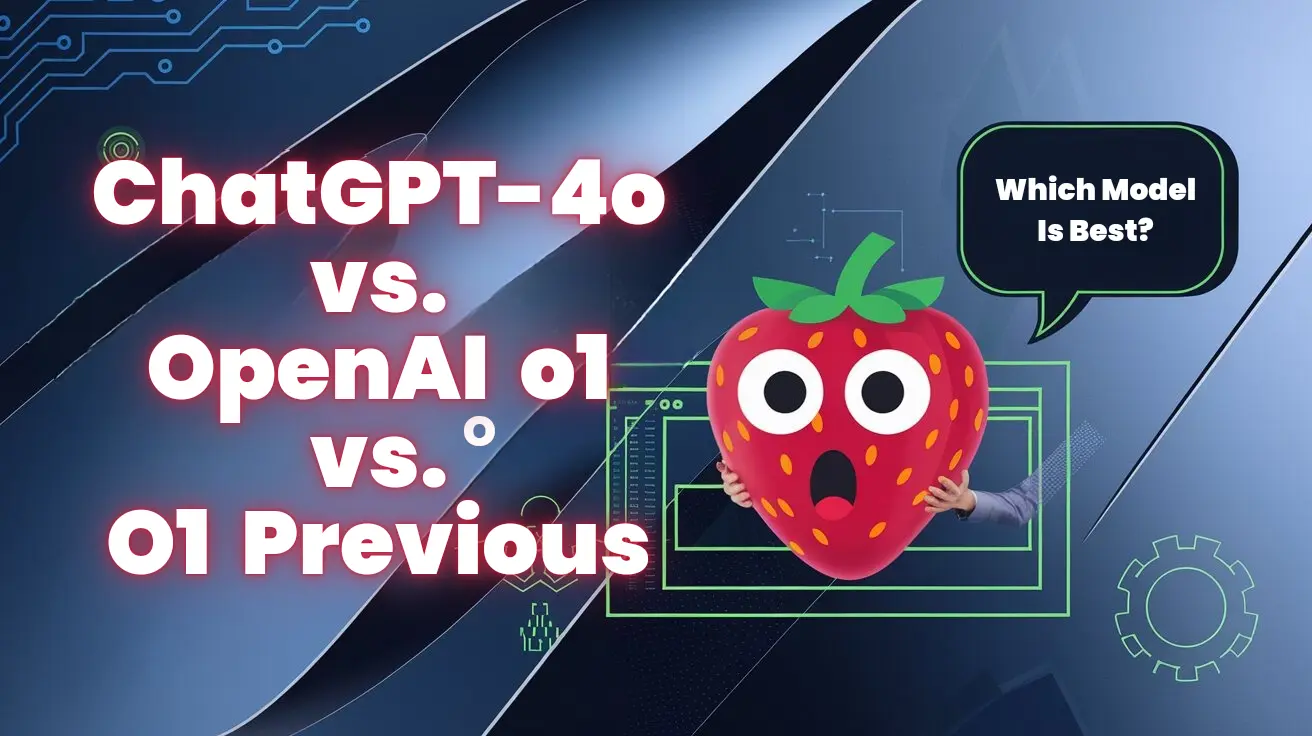|
Getting your Trinity Audio player ready... |
Discover the key differences between ChatGPT-4o, OpenAI O1, and its previous versions. Explore features, performance, and use cases to find the best AI model for your needs.
Which is Best: ChatGPT-4o vs. OpenAI O1 vs. O1 Previous? A Comprehensive Guide
When choosing between ChatGPT-4o, OpenAI O1, and its previous versions, it’s crucial to understand the differences and improvements each iteration offers. This guide aims to provide a thorough comparison to help you make an informed decision.
Introduction
In the rapidly evolving field of artificial intelligence, particularly natural language processing, OpenAI’s models are at the forefront. With the release of ChatGPT-4o, OpenAI O1, and its predecessors, users have a range of options to choose from. This guide will delve into each model’s features, performance, and use cases to help you determine which is best for your needs.
1. Overview of OpenAI Models
1.1 ChatGPT-4o
ChatGPT-4o represents the latest advancement in OpenAI’s GPT series. This model is designed to be more accurate, versatile, and capable of understanding context better than its predecessors.
Key Features:
- Enhanced Understanding: Improved contextual comprehension and nuanced responses.
- Increased Efficiency: Faster response times with reduced computational resources.
- Advanced Customization: More refined user customization options.
Use Cases:
- Customer service automation
- Content creation
- Educational tools
1.2 OpenAI O1
OpenAI O1, the predecessor to ChatGPT-4o, introduced significant improvements over earlier versions, setting new standards in AI performance.
Key Features:
- Improved Language Generation: More coherent and contextually relevant responses.
- Better Handling of Ambiguities: Enhanced ability to resolve ambiguous queries.
- Higher Accuracy: More accurate answers based on improved training data.
Use Cases:
- Business analytics
- Creative writing
- Interactive applications
1.3 O1 Previous Versions
Prior versions of O1 laid the groundwork for advancements seen in OpenAI O1 and ChatGPT-4o. Each iteration brought incremental improvements in language processing and model efficiency.
Key Features:
- Baseline Performance: Established the foundational capabilities for future models.
- Early Innovations: Introduced key features that influenced later versions.
- Limited Customization: Fewer options for user-specific adjustments.
Use Cases:
- Basic AI interactions
- Preliminary research and development
2. Comparing Performance
2.1 Accuracy and Contextual Understanding
ChatGPT-4o boasts superior accuracy and a deeper understanding of context compared to both OpenAI O1 and its previous versions. This means more relevant and contextually appropriate responses.
OpenAI O1 offers significant improvements over earlier models, with better accuracy and contextual handling, but may not match the refined capabilities of ChatGPT-4o.
Previous O1 Versions had more basic contextual understanding and less nuanced responses, making them less suitable for complex queries.
2.2 Speed and Efficiency
ChatGPT-4o is designed for optimal performance, providing faster response times and requiring fewer computational resources compared to its predecessors.
OpenAI O1 also demonstrated efficiency improvements over earlier models, though it may lag behind ChatGPT-4o in speed.
Previous O1 Versions were less efficient, with slower response times and higher resource requirements.
2.3 Customization and Flexibility
ChatGPT-4o offers extensive customization options, allowing users to tailor the AI’s responses more precisely to their needs.
OpenAI O1 provides some level of customization but is less flexible compared to ChatGPT-4o.
Previous O1 Versions had limited customization options, making them less adaptable for specific user needs.
Use Cases and Applications
ChatGPT-4o excels in diverse applications including advanced customer support, content generation, and personalized learning tools. Its versatility and improved performance make it ideal for complex and varied use cases.
OpenAI O1 is well-suited for applications requiring robust language generation and understanding, such as business analytics and creative writing.
Previous O1 Versions are best used for simpler tasks where advanced features are not essential, such as basic AI interactions and preliminary research.
Cost and Accessibility
ChatGPT-4o may come with a higher cost due to its advanced features and performance. However, the investment can be justified for applications requiring top-tier capabilities.
OpenAI O1 typically offers a balance between cost and performance, making it a viable option for many standard applications.
Previous O1 Versions are often more budget-friendly but may lack the advanced features and efficiency of newer models.
Conclusion
Choosing the best OpenAI model depends on your specific needs and budget. ChatGPT-4o is the top choice for those requiring the latest advancements in accuracy, efficiency, and customization. OpenAI O1 remains a solid option for robust performance at a potentially lower cost. Previous O1 Versions are suitable for basic applications where cutting-edge features are not crucial.
FAQs
1. What are the main differences between ChatGPT-4o and OpenAI O1?
- ChatGPT-4o offers improved accuracy, speed, and customization options compared to OpenAI O1.
2. Is ChatGPT-4o worth the investment over previous O1 versions?
- If advanced features and top performance are critical, ChatGPT-4o is worth the investment.
3. Can OpenAI O1 be used for business analytics?
- Yes, OpenAI O1 is well-suited for business analytics and other robust applications.
This post is for informational purposes only.Invest responsibly.No guarantees of results. Seek professional guidance before investing.Consult experts for personalized advice.AI-assisted content, editorially reviewed.See our terms for details.Please note that I am not a SEBI registered investment advisor. The information provided in this article is for informational and educational purposes only and should not be construed as financial advice. Always consult with a qualified and SEBI registered financial professional before making any investment decisions. .Follows Google policies.Not affiliated with Investopedia.com. investopedia.co.in Independent site.








